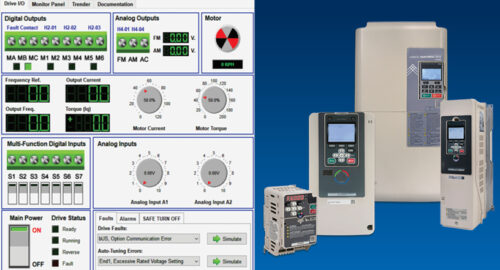Micro PLC
The ELC PLC includes built-in I/O on its CPUs to operate as a standalone controller. It has the ability to add expansion modules to its no-rack design by snapping them into mating connectors. The controllers are available in 10, 12 and 14-point I/O configurations, with two serial ports, pulse input/output motion control, an autotune PID and pluggable terminal blocks in a 1-inch-wide package.
The ELC PLC includes built-in I/O on its CPUs to operate as a standalone controller. It has the ability to add expansion modules to its no-rack design by snapping them into mating connectors. The controllers are available in 10, 12 and 14-point I/O configurations, with two serial ports, pulse input/output motion control, an autotune PID and pluggable terminal blocks in a 1-inch-wide package. Additional features include a real-time clock/calendar, external setpoint potentiometers, configurable seven-segment displays, advanced motion control up to 100 KHz pulse I/O and built-in analog I/O for standalone process control. Two built-in serial ports allow the controllers to network to RS-232/RS-485 Modbus-compatible devices, operator interfaces, remote I/O, dial-up or cellular/wireless modems, VFDs or any ASCII I/O device. The controllers are expandable up to 256 points of I/O. Analog and specialty modules include a built-in RS-485 Modbus slave port, enabling them to be remote I/O for a controller or as a low-cost temperature/analog-to-Modbus signal conditioner.
FactoryMation
Do you have experience and expertise with the topics mentioned in this content? You should consider contributing to our CFE Media editorial team and getting the recognition you and your company deserve. Click here to start this process.





